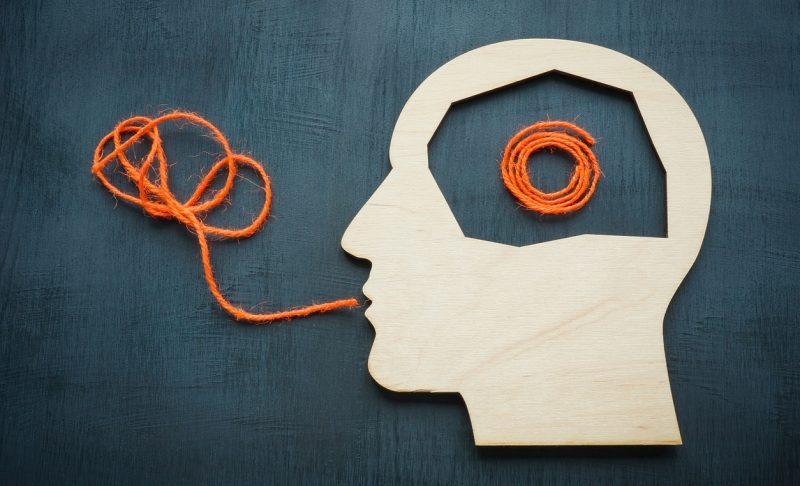
By MGH Communications, Harvard Gazette
By using advanced brain recording techniques, a new study led by researchers from Harvard-affiliated Massachusetts General Hospital demonstrates how neurons in the human brain work together to allow people to think about what words they want to say and then produce them aloud through speech.
The findings provide a detailed map of how speech sounds such as consonants and vowels are represented in the brain well before they are even spoken and how they are strung together during language production.
The work, which is published in Nature, could lead to improvements in the understanding and treatment of speech and language disorders.
“Although speaking usually seems easy, our brains perform many complex cognitive steps in the production of natural speech — including coming up with the words we want to say, planning the articulatory movements, and producing our intended vocalizations,” says senior author Ziv Williams, an associate professor in neurosurgery at MGH and Harvard Medical School.
“Our brains perform these feats surprisingly fast — about three words per second in natural speech — with remarkably few errors. Yet how we precisely achieve this feat has remained a mystery.”
“Although speaking usually seems easy, our brains perform many complex cognitive steps.” -Ziv Williams, Harvard Medical SchoolWhen they used a cutting-edge technology called Neuropixels probes to record the activities of single neurons in the prefrontal cortex, a frontal region of the human brain, Williams and his colleagues identified cells that are involved in language production and that may underlie the ability to speak. They also found that there are separate groups of neurons in the brain dedicated to speaking and listening.
“The use of Neuropixels probes in humans was first pioneered at MGH,” said Williams. “These probes are remarkable — they are smaller than the width of a human hair, yet they also have hundreds of channels that are capable of simultaneously recording the activity of dozens or even hundreds of individual neurons.”
Williams worked to develop the recording techniques with Sydney Cash, a professor in neurology at MGH and Harvard Medical School, who also helped lead the study.
The research shows how neurons represent some of the most basic elements involved in constructing spoken words — from simple speech sounds called phonemes to their assembly into more complex strings such as syllables.
For example, the consonant “da,” which is produced by touching the tongue to the hard palate behind the teeth, is needed to produce the word dog. By recording individual neurons, the researchers found that certain neurons become active before this phoneme is spoken out loud. Other neurons reflected more complex aspects of word construction such as the specific assembly of phonemes into syllables.
With their technology, the investigators showed that it’s possible to reliably determine the speech sounds that individuals will utter before they articulate them. In other words, scientists can predict what combination of consonants and vowels will be produced before the words are actually spoken. This capability could be leveraged to build artificial prosthetics or brain-machine interfaces capable of producing synthetic speech, which could benefit a range of patients.
“Disruptions in the speech and language networks are observed in a wide variety of neurological disorders — including stroke, traumatic brain injury, tumors, neurodegenerative disorders, neurodevelopmental disorders, and more,” said Arjun Khanna, a postdoctoral fellow in the Williams Lab and a co-author on the study. “Our hope is that a better understanding of the basic neural circuitry that enables speech and language will pave the way for the development of treatments for these disorders.”
The researchers hope to expand on their work by studying more complex language processes that will allow them to investigate questions related to how people choose the words that they intend to say and how the brain assembles words into sentences that convey an individual’s thoughts and feelings to others.
Additional authors include William Muñoz, Young Joon Kim, Yoav Kfir, Angelique C. Paulk, Mohsen Jamali, Jing Cai, Martina L Mustroph, Irene Caprara, Richard Hardstone, Mackenna Mejdell, Domokos Meszena, Abigail Zuckerman, and Jeffrey Schweitzer.
The research was supported by the National Institutes of Health.
—
This story is reprinted with permission from The Harvard Gazette.
***
You might also like these from The Good Men Project:
 .. In Modern Relationships, We Cheat Every Single Day
.. In Modern Relationships, We Cheat Every Single Day  Compliments Men Would Love to Hear More Often
Compliments Men Would Love to Hear More Often  .10 Things Good Men Should Never Do in a Relationship
.10 Things Good Men Should Never Do in a Relationship  It’s Not Just Sex That He is Longing For. It’s This
It’s Not Just Sex That He is Longing For. It’s This Join The Good Men Project as a Premium Member today.
All Premium Members get to view The Good Men Project with NO ADS.
A $50 annual membership gives you an all access pass. You can be a part of every call, group, class and community.
A $25 annual membership gives you access to one class, one Social Interest group and our online communities.
A $12 annual membership gives you access to our Friday calls with the publisher, our online community.
Register New Account
Log in if you wish to renew an existing subscription.
Username
First Name
Last Name
Password
Password Again
Choose your subscription level
- Yearly - $50.00 - 1 Year
- Monthly - $6.99 - 1 Month
Credit / Debit Card PayPal Choose Your Payment Method
Auto Renew
Subscribe to The Good Men Project Daily Newsletter By completing this registration form, you are also agreeing to our Terms of Service which can be found here.Need more info? A complete list of benefits is here.
—
Photo credit: iStock
The post The Miracle of ‘Dog’ appeared first on The Good Men Project.
Original Article










